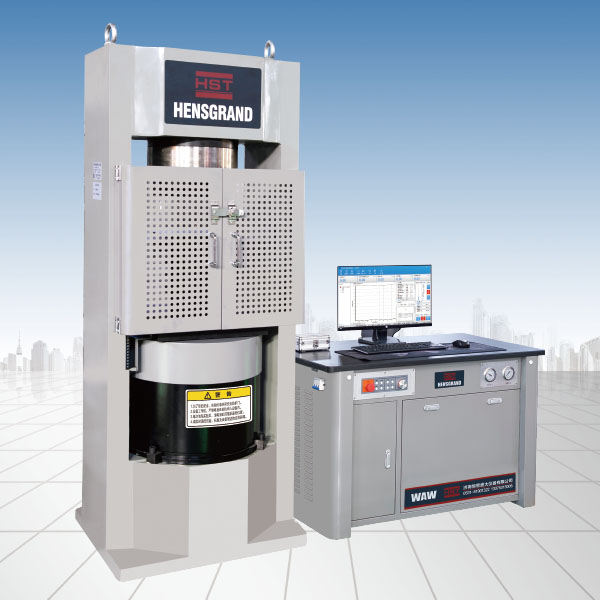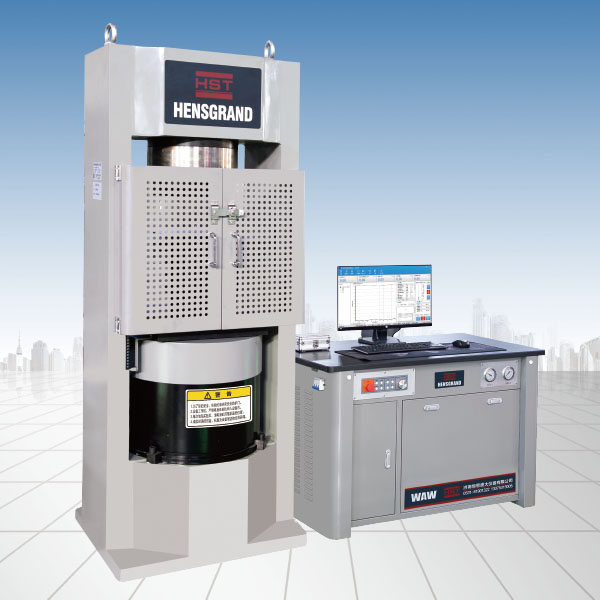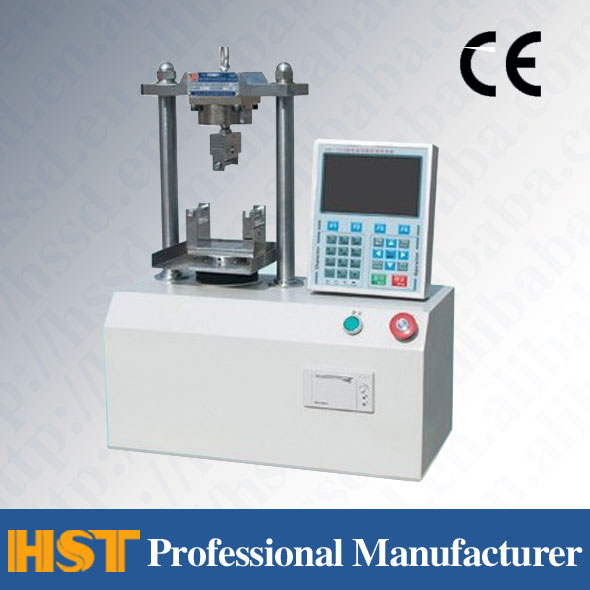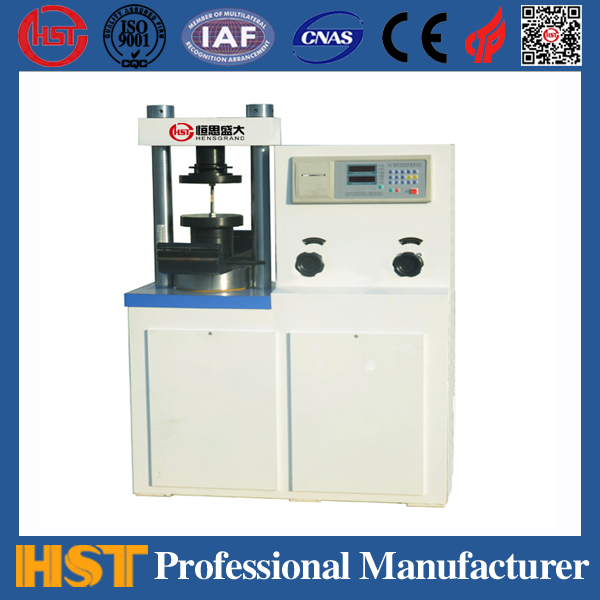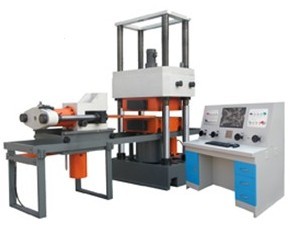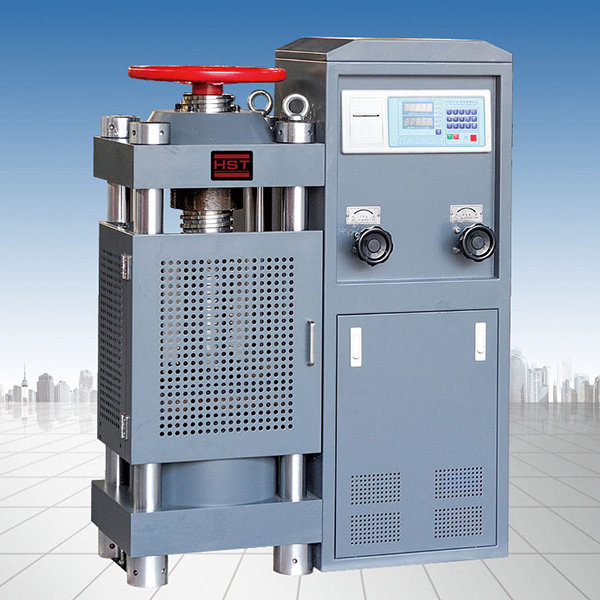Industry Information
Working principle of hydraulic universal testing machine
Release time:2018-11-23 source:Jinan Hengsi Shanda Instrument Co., Ltd. Browse:
Universal material test is the product of the combination of modern electronic technology and mechanical transmission technology. It is a large precision testing instrument composed of the special characteristics of mechanical and electrical systems. It can conduct a variety of performance tests such as tensile, compression, bending, peeling, and shear on various materials. It has the characteristics of wide measurement range, high accuracy and fast response. Reliable work and high efficiency, and can display and record and print test data in real time.
The universal material testing machine is composed of a measurement system, a driving system, a control system and a computer (computer system-type tensile testing machine).
1. The measurement system of universal material testing machine
1. Measurement of force value
Measurement is achieved through force sensors, amplifiers and data processing systems. The commonly used force sensor is a strain gauge sensor.
The so-called strain gauge sensor is a device that can turn a certain mechanical quantity into a power output device that is composed of [strain gauge], elastic components and certain accessories (compensation components, protective covers, wiring sockets, and loaders). There are many types of strain gauge-type tension and pressure sensors at home and abroad, mainly including cylindrical force sensors, spoke-type force sensors, S double-connected hole sensors, cross beam sensors, etc.
It is known from the mechanics of materials that under small deformation conditions, the strain ε at a certain point of an elastic element is proportional to the force exerted by the elastic element, and is also proportional to the deformation of elasticity. Taking the S-type sensor as an example, when the sensor is subjected to the tension force P, a strain gauge is pasted on the surface of the elastic element, because the strain of the elastic element is proportional to the magnitude of the external force P, the strain gauge is connected to the measuring circuit, and the output voltage can be measured to measure the magnitude of the force.
For sensors, differential full bridge measurement is generally used, that is, the pasted strain gauge is composed of bridge paths, R1, R2, R3, and R4, which are actually 4 (or 8) strain gauges with equal resistance values, that is, R1=R2=R3=R4. When the sensor is subjected to external force (tension force or pressure), the elastic elements of the sensor generate strain and cause the resistance values to change, and the changes are △R1△, R2, △R3, and △R4 respectively. As a result, the originally balanced bridge is now unbalanced, and the bridge path has a voltage output. Assume that △E
Then △E=[R1R2/(R1+R2)2]△R1/R1-△R2/R2+△R3/R3-△R4/R4)U
In the formula, U is the voltage of the external power supply to the bridge circuit
Further simplify
△E=[R2/4R2] (△R1/R-△R2/R+△R3/R-△R4/R)U
Use △Ri/Ri=Kεi to top
Then there is △E=[UK/4] (ε1-ε2+ε3-ε4)
Simply put, external force P causes deformation of the strain gauge in the sensor, resulting in imbalance of the bridge, and thus changes in the sensor output voltage. We can know the magnitude of the force by measuring the change in the output voltage.
Generally speaking, the output signal of the sensor is very weak, usually only a few mV. If we measure this signal directly, it is very difficult and cannot meet the requirements of high-precision measurement. Therefore, this weak signal must be amplified through an amplifier, and the amplified signal voltage can reach 10V. The signal at this time is an analog signal. This analog signal is converted into a digital signal through a multiplex switch and an A/D conversion chip, and then data processing is performed. At this point, the force measurement has come to an end.
2. Measurement of deformation
Measured by deformation measuring device, it is used to measure the deformation generated by the sample during the test.
There are two chucks on the device, which are connected to the [photoelectric encoder] installed on the top of the measuring device through a series of transmission mechanisms. When the distance between the two chucks changes, the axis of the photoelectronic encoder is driven to rotate, and the photoelectronic encoder will have a pulse signal output. The processor then processes this signal to obtain the deformation amount of the sample.
3. Measurement of beam displacement
The principle is roughly the same as the deformation measurement, and the displacement of the beam is obtained by measuring the output pulse number of the photoelectric encoder.
2. Drive system of universal material testing machine
It is mainly used for the cross beam movement of the test machine. Its working principle is that the servo system controls the motor. The motor drives the screw to rotate through a series of transmission mechanisms such as the reducer to achieve the purpose of controlling the cross beam movement. By changing the speed of the motor, the movement speed of the beam can be changed.
3. Control system of universal material testing machine
As the name suggests, it is a system that controls the operation of the test machine. People can control the operation of the test machine through the operating table, and the status of the test machine and various test parameters can be obtained through the display screen. If the machine is equipped with a computer, the computer can also realize various functions and perform data processing and analysis, and print test results. The communication between the test machine and the computer is generally done using the RS232 serial communication method, which communicates through the serial port (COM port) behind the computer. This technology is relatively mature, reliable and easy to use.
4. Computer
Used to collect and process analytical data. After entering the test interface, the computer will continuously collect various test data, draw the test curve (common force-displacement curve) in real time, and automatically calculate each test parameter and output report.
5. Quality assurance
The equipment will be deemed to be formally delivered after the ordering party has passed the formal acceptance. The three-guarantee period for the equipment is one year from the date of official delivery. During the three-guarantee period, the supplier will promptly and free repair services for all kinds of faults in the equipment, and replace all kinds of parts that are not caused by humans in a timely and free manner. If the equipment outside the warranty period fails during use, the supplier will promptly serve the orderer and actively assist the orderer in completing the maintenance tasks.
6. Contact Us
Our company is a production enterprise. Welcome to call for consultation and factory inspection
Tel: 0531-66715660
Fax: 0531-85962953
Address: No. 188, Xiaoqing Hebei Road (Huanggang Industrial Park) in Jinan City
- Previous article:Testing machine Jinan Hengsi Shanda high-quality production
- Next article:Introduction to the universal electronic test machine
Recommended productsPRODUCTS


















